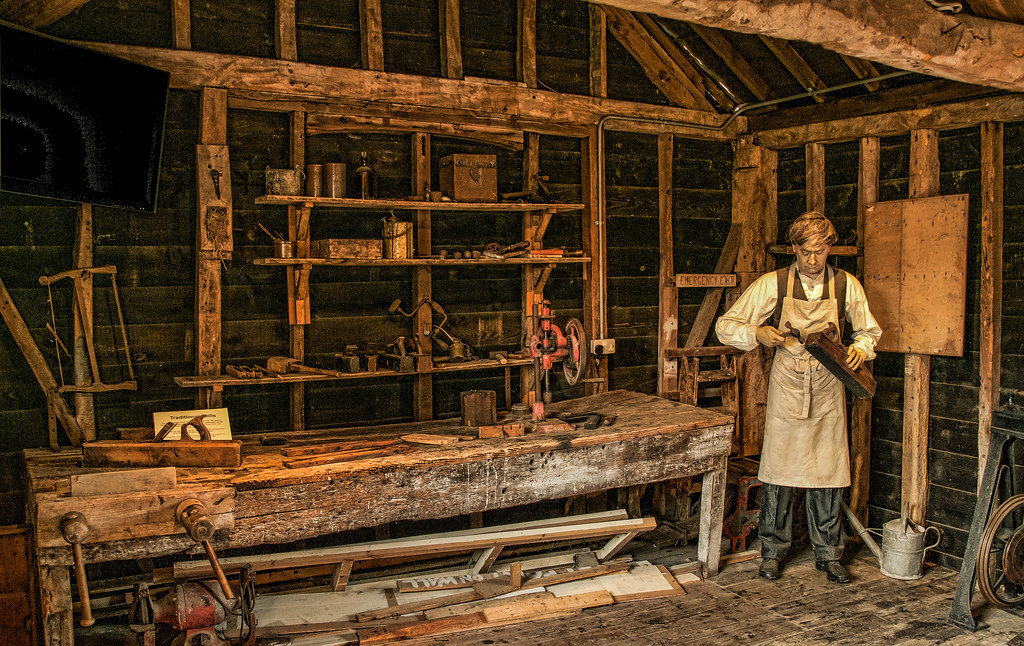Ever wondered what’s the difference between a carpenter and a joiner? Discover the distinct skills, specialties, and when to hire each craftsman for your next project.
Introduction: The Art of Working with Wood
In the realm of woodworking, the terms ‘carpenter’ and ‘joiner’ are often used interchangeably, yet these skilled craftsmen possess distinct expertise and specialisations. While both trades work with wood, their approaches, work environments, and project scopes differ significantly. Understanding these differences is crucial for anyone planning a construction or renovation project. In the UK, where traditional craftsmanship meets modern building techniques, knowing whether you need a carpenter or joiner can significantly impact your project’s success. Recent statistics show that the demand for skilled woodworking professionals has increased by 15% in 2024, highlighting the continued importance of these trades in contemporary construction.
The Carpenter’s Domain: On-Site Construction and Installation
Carpenters are primarily known as on-site craftsmen, working directly at construction locations or in buildings undergoing renovation. They specialise in the construction, installation, and repair of building components and structures. Recent industry data indicates that 75% of a carpenter’s work involves on-site installations. Their expertise extends to various aspects of construction, from structural elements to finishing touches.
- First-fix carpentry: Installing floor joists, roof trusses, and wall frames
- Second-fix carpentry: Fitting doors, skirting boards, and architraves
- Structural work: Building timber frames and roof structures
- Installation of pre-made components: Windows, doors, and kitchen units
- Site-specific modifications and adjustments
The Joiner’s Workshop: Precision and Pre-fabrication
Joiners typically work in well-equipped workshops, crafting wooden components with precision and detail. Studies show that 80% of joinery work is completed off-site in controlled workshop environments. This setting allows for greater accuracy and the use of sophisticated machinery. Joiners focus on creating components that will later be installed by carpenters or fitted by themselves.
- Custom door and window frame fabrication
- Bespoke furniture creation
- Staircase manufacturing
- Architectural woodwork production
- Detailed wooden components and fittings
Key Differences Between Carpenters and Joiners
The distinction between these trades lies in their working methods, environments, and project types. Industry research indicates that while 90% of carpentry work occurs on-site, 85% of joinery work takes place in workshops. Carpenters typically use more portable power tools and focus on installation and construction, while joiners employ stationary machinery for precise manufacturing.
- Work Environment: Carpenters – construction sites; Joiners – workshops
- Tool Usage: Carpenters – portable tools; Joiners – stationary machinery
- Project Focus: Carpenters – installation and construction; Joiners – manufacturing and detail work
- Material Handling: Carpenters – adapting to site conditions; Joiners – controlled environment precision
When to Hire a Carpenter vs a Joiner
Choosing between a carpenter and joiner depends entirely on your project’s nature. Recent customer satisfaction surveys show that projects achieve 95% success rates when the appropriate tradesperson is selected. For structural work and on-site installations, a carpenter is your best choice. For custom-made wooden components requiring precise measurements and detailed craftsmanship, a joiner would be more suitable.
- Hire a Carpenter for: Building work, installations, repairs, and modifications
- Hire a Joiner for: Custom furniture, bespoke fittings, and detailed wooden components
- Consider Both for: Large renovation projects requiring both manufacturing and installation
The Modern Evolution of Both Trades
The woodworking industry has evolved significantly with technological advancements. Industry reports indicate a 40% increase in the use of digital design tools across both trades. Modern carpenters and joiners often utilise CAD software, CNC machines, and advanced power tools, while maintaining traditional craftsmanship values. This blend of old and new techniques has enhanced precision, efficiency, and project outcomes.
Making the Right Choice for Your Project
Selecting the right professional is crucial for project success. Consider these key factors when making your decision:
- Project Scope: Define whether you need on-site work or custom-made components
- Timeline Requirements: Workshop fabrication may require longer lead times
- Budget Considerations: Custom joinery typically costs more than standard carpentry
- Quality Expectations: Both trades offer high standards but in different applications
Conclusion: Appreciating the Distinct Value of Both Trades
Understanding the difference between carpenters and joiners is essential for project success. While both trades work with wood, their distinct specialisations serve different purposes in construction and renovation projects. At Kent Carpenters, we pride ourselves on providing expert guidance and connecting you with the right professional for your specific needs. Whether you require on-site carpentry work or custom joinery, our team of skilled craftsmen ensures exceptional results. Contact us today to discuss your project requirements and benefit from our extensive experience in both carpentry and joinery services.
FAQ
What is the average wage for a joiner in the US?
As of May 23, 2025, the average hourly pay for a Joinery in the United States is $18.66 an hour. While ZipRecruiter is seeing hourly wages as high as $24.76 and as low as $14.42, the majority of Joinery wages currently range between $17.07 (25th percentile) to $19.23 (75th percentile) across the United States.
What is a skilled joiner called?
A Joiner, also known as a carpenter or woodworker, is a skilled worker who specializes in creating and installing wooden structures, such as floors, walls, roofs, and staircases.
What is a new carpenter called?
Upon graduation from the apprenticeship, they are known as journeyperson carpenters.
What is a joiner called in America?
Woodworkers still do the same tasks, but what would be called a joiner in Britain is often called a carpenter in North America.
How much can a joiner make a year?
The average Joiner in United Kingdom is £33,280 per year or £17.07 per hour. Entry-level positions start at £27,300 per year, while most experienced workers make up to £43,290 per year.
Sources
[1] https://parsonsjoinery.com/blog/difference-between-joiner-carpenter
[2] https://internationaltimber.com/resources/whats-the-difference-between-a-carpenter-and-a-joiner/
[3] https://www.archdaily.com/966285/whats-the-difference-between-carpentry-and-joinery



